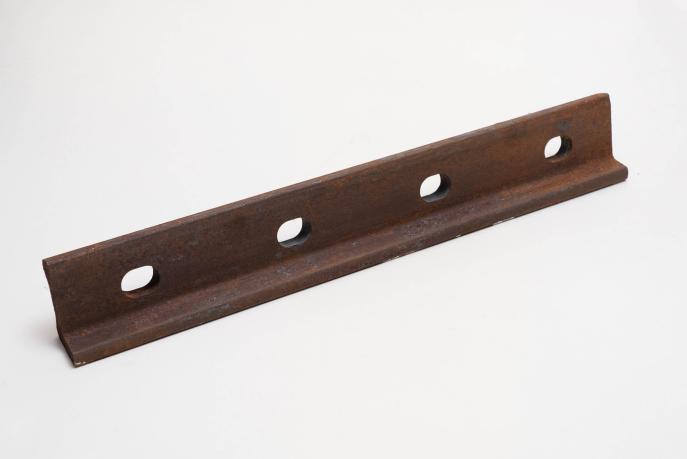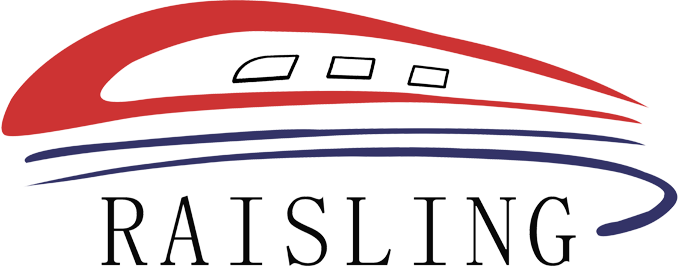Why Fishplates Are Essential for Track Stability: A Comprehensive Guide
Jul 11,2025
Why Fishplates Are Essential for Track Stability Understanding the Importance of Track Stability in Rail Systems Track stability is a critical aspect of rail transport, impacting safety, efficiency, and operational reliability. The infrastructure must endure various forces, including dynamic loads from trains, temperature fluctuations, and geological shifts. Maintaining a stable track alignment is

Why Fishplates Are Essential for Track Stability
Understanding the Importance of Track Stability in Rail Systems
Track stability is a critical aspect of rail transport, impacting safety, efficiency, and operational reliability. The infrastructure must endure various forces, including dynamic loads from trains, temperature fluctuations, and geological shifts. Maintaining a stable track alignment is crucial for ensuring a smooth ride, minimizing wear and tear on rolling stock, and preventing derailments. Within this intricate system, fishplates play an integral role.
What Are Fishplates?
Fishplates, also known as rail joints, are metal bars that connect two sections of rail together. They act as a bridge between the ends of the rails, ensuring a continuous and stable track structure. Typically made from high-strength steel, these components are designed to accommodate the stresses and strains experienced in rail systems.
Components of a Fishplate
A fishplate consists of several key components:
1. **Rail Alignment**: Ensures that the rail ends are correctly aligned to maintain the track's integrity.
2. **Bolts and Nuts**: Used to secure the fishplate to the rail ends, preventing movement.
3. **Gaskets**: Some fishplates incorporate gaskets for added stability and to reduce noise.
The Functionality of Fishplates in Track Systems
Fishplates serve multiple functions that contribute to overall track stability, including:
1. Connecting Rail Sections
Fishplates securely join two adjacent rail sections, maintaining the alignment necessary for safe train operations. This connection prevents any excessive gaps or misalignments that could lead to derailments.
2. Distributing Loads
By connecting rails, fishplates help distribute the dynamic loads exerted by passing trains across a broader area. This load distribution is vital for minimizing stress concentrations that could weaken the track over time.
3. Absorbing Thermal Expansion
Rails expand and contract with temperature changes. Fishplates allow for slight movements in the rail, accommodating thermal expansion while maintaining track stability.
The Engineering Behind Fishplates
Understanding the engineering principles behind fishplates is essential for appreciating their contribution to rail stability. These components are engineered to withstand high tensile strength, corrosion, and fatigue.
Material Selection
Fishplates are typically crafted from high-strength steel alloys designed to endure harsh environmental conditions. The choice of material is critical to ensure longevity and reliability.
Design Considerations
The design of fishplates involves careful consideration of various factors, including:
- **Load Bearing Capacity**: Fishplates must support heavy loads without deformation.
- **Resistance to Wear**: The surface finish and coating protect against environmental wear and corrosion.
- **Ease of Installation**: Designs often prioritize quick and efficient installation to minimize downtime.
Types of Fishplates and Their Applications
There are several types of fishplates, each suited for different rail systems and conditions.
1. Standard Fishplates
These are the most common type, used in various rail systems worldwide. They provide reliable performance under standard operating conditions.
2. Insulated Fishplates
Insulated fishplates are designed to electrically isolate sections of track. This feature is crucial for signaling systems, preventing electrical interference between rail sections.
3. Heavy-Duty Fishplates
These are used in high-load applications, such as freight railroads, where the forces exerted on the track are significantly greater.
Installation Techniques for Fishplates
Proper installation of fishplates is critical for ensuring track stability. The following steps outline best practices:
1. Preparation of Rail Ends
Before installation, the ends of the rails must be cleaned and prepared to ensure a proper fit for the fishplates.
2. Positioning the Fishplate
Align the fishplate with the rail ends, ensuring that it fits snugly and maintains correct alignment.
3. Securing the Fishplate
Using high-strength bolts and nuts, secure the fishplate to the rail. It is essential to adhere to specified torque settings to prevent loosening over time.
4. Regular Inspections
After installation, regular inspections are necessary to ensure the fishplates remain secure and in good condition. Any signs of wear should be addressed promptly to prevent failures.
Benefits of Using Fishplates in Rail Systems
The integration of fishplates into rail systems provides numerous advantages.
1. Enhanced Safety
By ensuring proper alignment and stability, fishplates significantly enhance safety on rail networks, reducing the risk of derailments.
2. Cost Efficiency
Investing in quality fishplates can lead to long-term cost savings by minimizing maintenance needs and extending the lifespan of rail infrastructure.
3. Improved Ride Quality
Fishplates contribute to a smoother ride by preventing bumps and misalignments, enhancing passenger comfort.
Challenges in Fishplate Usage
While fishplates are essential, they are not without challenges.
1. Wear and Tear
Over time, fishplates can experience wear due to constant loading and environmental factors. Regular inspections and timely replacements are vital.
2. Installation Complexity
Improper installation can lead to severe issues, including misalignment and track instability. Proper training for personnel is essential.
3. Environmental Factors
Harsh weather conditions can affect fishplates' performance. Ensuring they are made from corrosion-resistant materials can mitigate these effects.
Future Trends in Fishplate Technology
As technology advances, so does the design and functionality of fishplates. Innovations may include:
1. Smart Fishplates
Incorporating sensors into fishplates can provide real-time data on stress and structural integrity, allowing for proactive maintenance.
2. Enhanced Materials
Research into new materials that offer greater strength and resistance to environmental factors could lead to more durable fishplates.
3. Sustainable Practices
The use of eco-friendly materials and manufacturing processes can enhance the sustainability of rail transport systems.
FAQs About Fishplates and Track Stability
1. What materials are fishplates made from?
Fishplates are typically made from high-strength steel alloys, designed to withstand significant loads and environmental conditions.
2. How often should fishplates be inspected?
Regular inspections should be conducted at least annually, or more frequently in high-traffic areas, to ensure they remain secure and in good condition.
3. Can fishplates be used on all types of rail systems?
While fishplates are versatile, specific types are designed for particular applications, such as insulated fishplates for signaling systems.
4. What are the signs of fishplate wear?
Signs of wear include visible corrosion, loosened bolts, or gaps between the fishplate and rail ends.
5. How can fishplate installation affect track stability?
Proper installation ensures alignment and stability, while poor installation can lead to misalignments and increase the risk of derailments.
Conclusion
Fishplates are an indispensable component of rail systems, playing a crucial role in ensuring track stability and safety. Their ability to connect rail sections, distribute loads, and accommodate thermal expansion makes them vital for the integrity of railway infrastructure. As technology continues to evolve, innovations in fishplate design and materials will likely enhance their performance and longevity. Understanding the importance of fishplates not only benefits railway operators but also contributes to the safety and comfort of passengers. By prioritizing quality and ongoing maintenance, we can ensure that rail transport remains a reliable and efficient mode of transportation for years to come.
Previous:
Recommended
Asia Pacific Rail 2025 Concludes in Bangkok, Showcasing Rail Industry's Future
Bangkok, May 29 - The Asia Pacific Rail 2025, a leading event in the railway and rail transit industry, successfully concluded on May 29 in Bangkok, Thailand.
Contact Us


